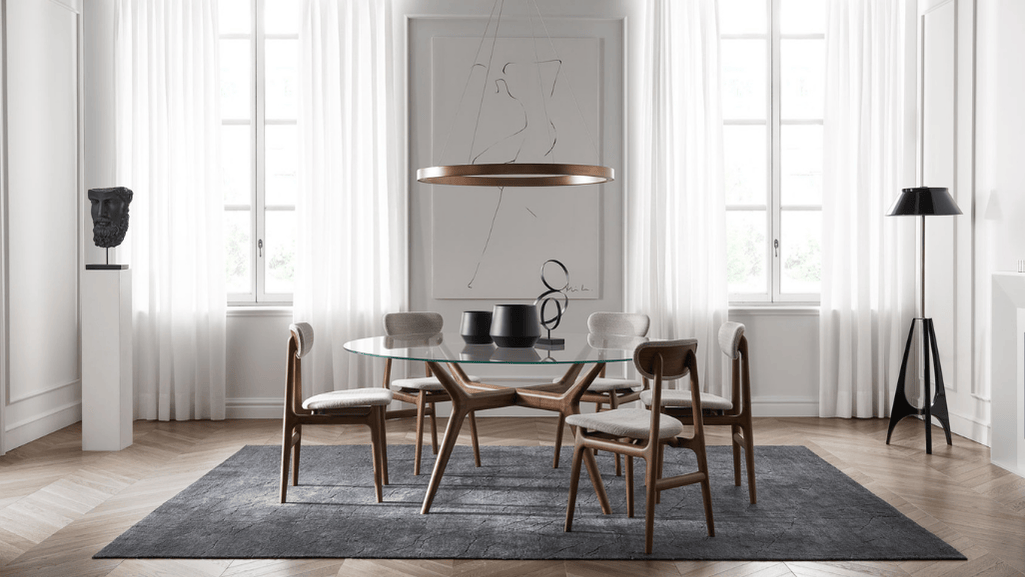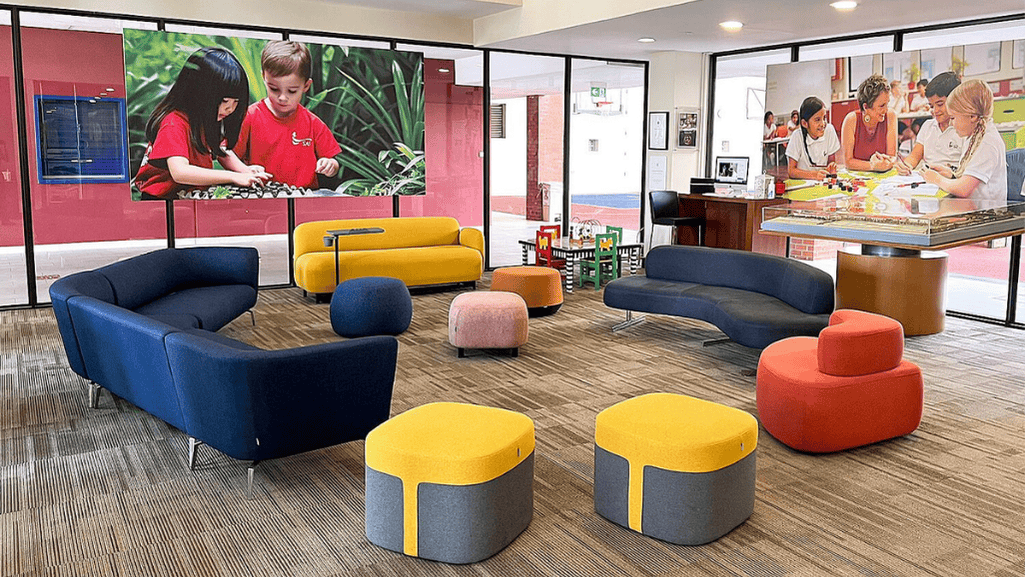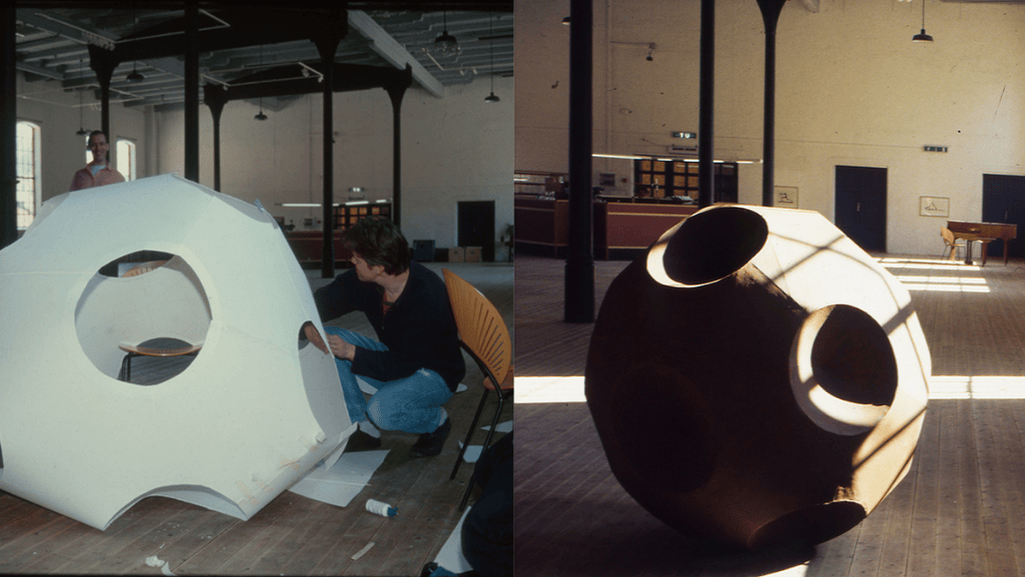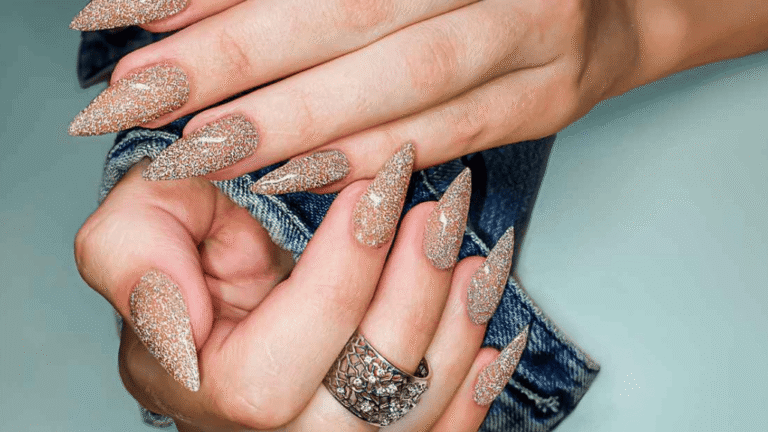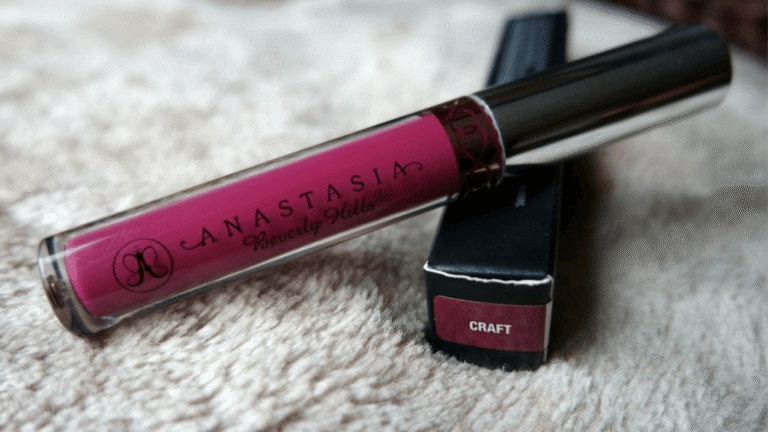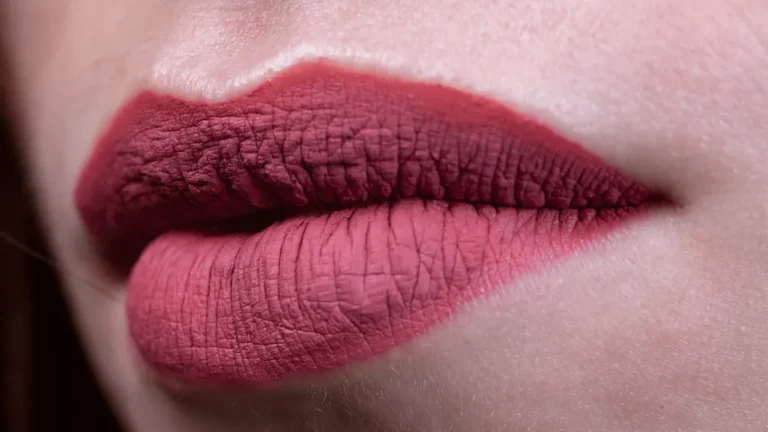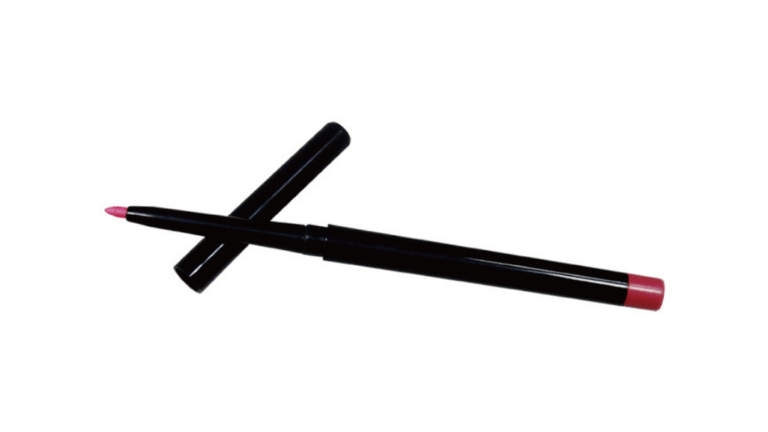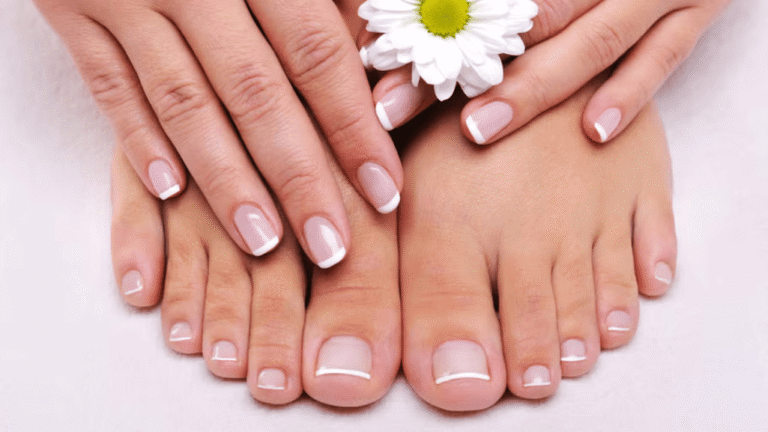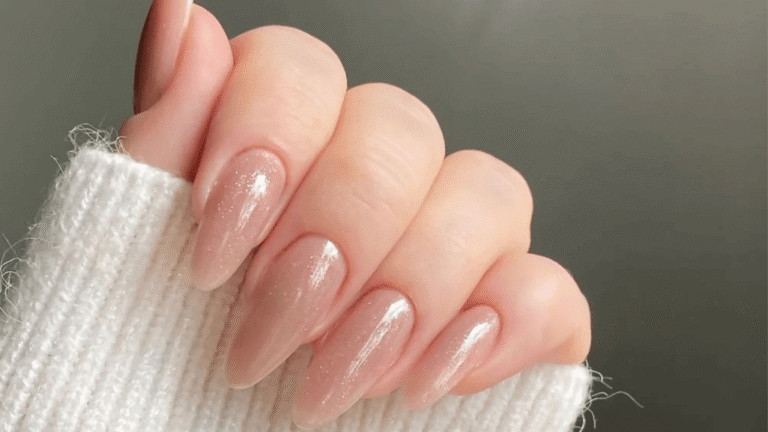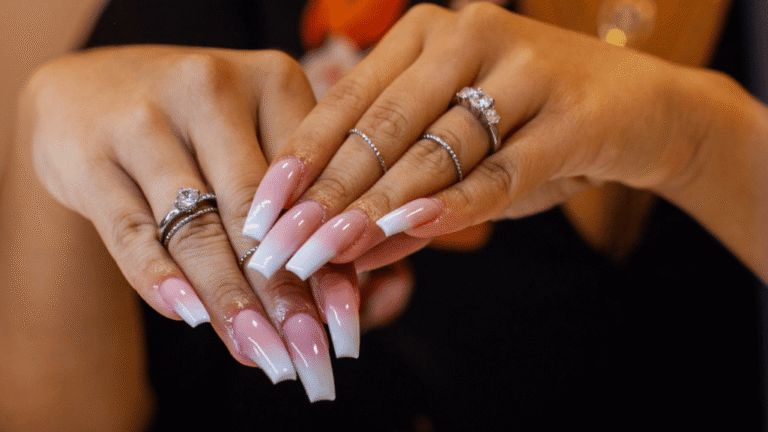In design and decor, the use of round shapes is a powerful tool that can transform the aesthetic appeal of a space. Whether it’s a circular coffee table, a rounded ottoman, or a sleek pendant light with a round shade, incorporating round shapes adds a touch of elegance and creativity to any room.
Round shapes have long been celebrated for their ability to create a sense of harmony and balance. Their smooth curves and absence of sharp edges evoke a feeling of softness and fluidity, making them visually pleasing and inviting.
From a practical standpoint, round shapes are incredibly versatile. They can be found in a variety of design elements, such as furniture, lighting fixtures, and accessories. By strategically incorporating these circular and rounded forms, designers can add visual interest and balance to a room.
KEY TAKEAWAYS:
- Round shapes can transform the aesthetic appeal of a space in design and decor.
- They create a sense of harmony and balance, evoking softness and fluidity.
- Round shapes are versatile and can be incorporated into various design elements.
- They add visual interest and balance to a room.
- By understanding the significance of round shapes, designers can create visually pleasing and harmonious spaces.
Now that we understand the importance of round shapes in design and decor, let’s explore the influence they have on the overall aesthetic of a space.
The Influence of Round Shapes in Design
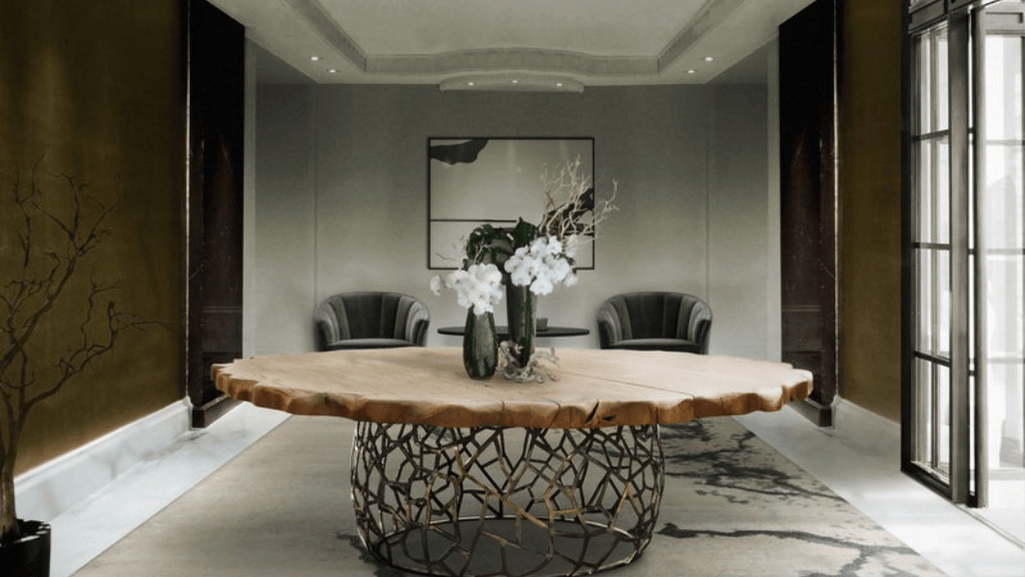 When it comes to design, the shape of an object holds significant importance. In recent years, round shapes have gained immense popularity for their ability to create a sense of harmony and flow in a space. Circular design elements and rounded edges add a touch of elegance, softness, and balance to any room.
When it comes to design, the shape of an object holds significant importance. In recent years, round shapes have gained immense popularity for their ability to create a sense of harmony and flow in a space. Circular design elements and rounded edges add a touch of elegance, softness, and balance to any room.
One of the key advantages of incorporating round shapes in design is their ability to create a visual rhythm that draws the eye and creates a pleasing aesthetic. The smooth and curved lines of round shapes contribute to a sense of movement, evoking a feeling of energy and dynamism within the space.
Furthermore, round shapes have a versatile nature that allows them to seamlessly blend with various design styles. Whether it’s a contemporary, minimalist, or traditional space, round shapes can be incorporated to add a unique touch.
Incorporating rounded edges in furniture and decor pieces brings a gentle and inviting feel to a room. The absence of sharp edges contributes to a safer and more comfortable environment, particularly beneficial for households with children or elderly individuals.
The Benefits of Circular Design Elements:
- Conveys a sense of harmony and flow
- Adds elegance and softness to a space
- Creates a visual rhythm and movement
- Blends well with various design styles
- Brings a gentle and inviting feel to a room
When strategically incorporated, round shapes can transform a dull and monotonous space into one that is visually captivating and inviting. The use of circular design elements and rounded edges exemplifies the power of thoughtful design choices that go beyond mere aesthetics.
The Versatility of Round Shapes
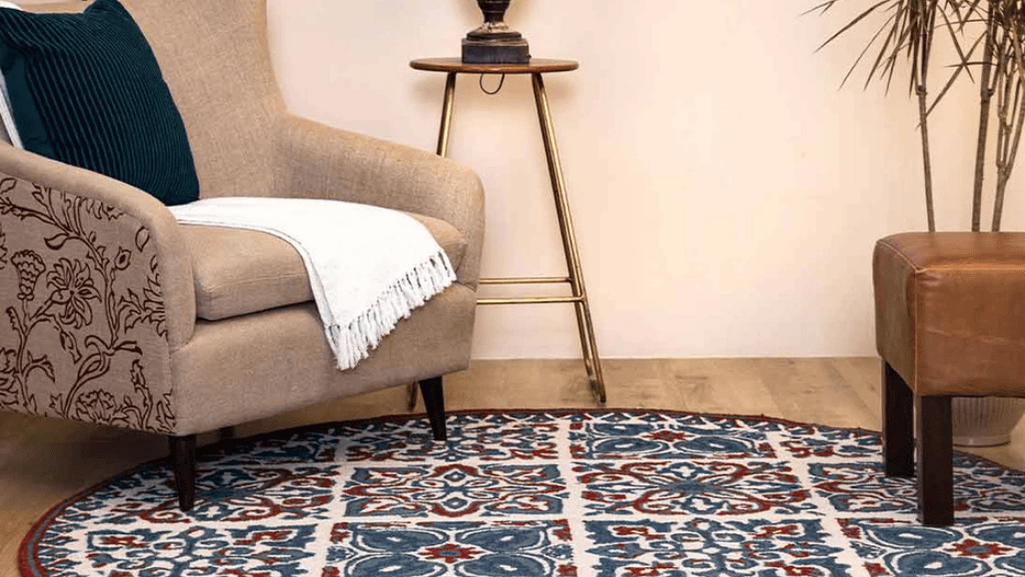 Round shapes offer a myriad of design possibilities and can be seamlessly incorporated into various aspects of interior design and decor. From furniture to lighting fixtures and accessories, round shapes bring a touch of elegance and balance to any room. Let’s explore the versatility of round shapes and discover how they can elevate the aesthetic appeal of your space.
Round shapes offer a myriad of design possibilities and can be seamlessly incorporated into various aspects of interior design and decor. From furniture to lighting fixtures and accessories, round shapes bring a touch of elegance and balance to any room. Let’s explore the versatility of round shapes and discover how they can elevate the aesthetic appeal of your space.
Furniture
When it comes to furniture, round shapes can create a welcoming and inviting atmosphere. Circular tables, ottomans, and sofas with rounded edges add a sense of fluidity and softness to a space. Whether in a cozy reading nook or a formal dining area, round furniture pieces are perfect for creating a focal point and fostering intimate conversations.
Lighting Fixtures
Lighting plays a crucial role in design, and incorporating round shapes in light fixtures can make a bold statement. Pendant lights with circular shades or chandeliers with rounded crystals can add a touch of glamour and sophistication. By diffusing light evenly and casting gentle shadows, round-shaped lighting fixtures create a warm and cozy ambiance.
Accessories
Adding accessories with round shapes is an effortless way to introduce visual interest and harmonize your decor. Mirrors with rounded frames can make a small space appear larger, while round rugs create a cozy and intimate atmosphere. Incorporating circular artwork or decorative objects can provide a modern and artistic touch, elevating the overall aesthetic of your space.
To further illustrate the versatility of round shapes, consider the following table that showcases various examples of how circular, rounded, or round-shaped elements can be incorporated into different areas of your home.
| Area | Examples |
|---|---|
| Living Room | Round coffee table, pendant light with circular shade |
| Bedroom | Round mirror, circular bedside table |
| Dining Room | Round dining table, chandelier with rounded crystals |
| Office | Circular desk, round wall clock |
As you can see, incorporating round shapes into your design and decor adds versatility and visual appeal. Whether through furniture, lighting fixtures, or accessories, embracing circular and rounded elements can transform your space into a harmonious and inviting sanctuary.
Creating a Sense of Movement with Round Shapes
In interior design, round shapes have the remarkable ability to bring a sense of movement and energy to a space. By incorporating curved lines and circular forms, designers can evoke a dynamic atmosphere, reminiscent of orbits and motion.
Curved lines guide the eye, leading it on a journey throughout the room. The smooth and fluid nature of these lines creates a visual flow that captivates and engages the observer. When combined with circular forms, a harmonious balance is achieved, further enhancing the sense of movement within the space.
One effective way to utilize round shapes is by incorporating them in furniture. A curved sofa or a circular coffee table can instantly transform a room, making it feel more lively and vibrant. These curved pieces not only create visual interest but also allow for a seamless flow of movement, enabling easy navigation around the space.
Lighting fixtures can also play a crucial role in creating a sense of movement with round shapes. Pendant lights with circular designs can cast captivating patterns of light and shadow, evoking a feeling of motion and adding depth to the ambiance. By strategically placing these fixtures, designers can highlight the curvature of the room and emphasize the dynamic qualities of round shapes.
Finally, accessories such as round mirrors or artwork can contribute to the overall sense of movement in a space. Mirrors, with their reflective surfaces, create the illusion of expanded space and add a sense of depth and motion to the room. Artwork featuring circular forms or abstract compositions can further enhance the atmosphere, stimulating the imagination and inviting the viewer to explore the visual narrative.
By embracing the curved, circular nature of round shapes, designers have the power to transform an ordinary space into one filled with energy and movement. Whether it’s through curved furniture, lighting fixtures, or thoughtfully placed accessories, round shapes offer endless possibilities for creating visually captivating and dynamic interiors.
| Ways to Create a Sense of Movement with Round Shapes |
|---|
| 1. Incorporate curved furniture pieces such as sofas or coffee tables |
| 2. Use pendant lights with circular designs to add dynamic lighting effects |
| 3. Place round mirrors strategically to create the illusion of expanded space |
| 4. Select artwork featuring circular forms or abstract compositions to stimulate visual interest |
The Psychological Impact of Round Shapes
Incorporating round shapes in design and decor doesn’t just create visual interest—it also has a profound psychological impact on the occupants of a space. The softness and fluidity of round shapes can evoke feelings of relaxation, harmony, and comfort, making them an excellent choice for enhancing the overall ambiance of a room.
One of the key reasons why round shapes have a soothing effect on our psyche is their association with nature. Round shapes are abundant in the natural world, such as the curves of hills, the ripples of water, and the contours of flowers. By incorporating these organic forms into a space, we mimic the calming sensations we experience in outdoor environments.
Furthermore, round shapes promote a sense of balance and harmony. Unlike sharp angles and straight lines, which can create a sense of tension, round shapes have a gentle and flowing quality that encourages relaxation. They offer a visual respite and create a sense of ease and comfort in the room.
The psychological impact of round shapes extends beyond visual aesthetics. Studies have shown that incorporating them in design and decor can have a positive influence on our emotional well-being. Research has suggested that exposure to round shapes can reduce stress levels, improve mood, and enhance overall feelings of tranquility and contentment.
In addition, round shapes can promote a sense of togetherness and connectedness. In communal spaces, such as living rooms or dining areas, incorporating round furniture or decor elements can encourage conversations and create a warm and inviting atmosphere. The absence of sharp edges in round shapes can subconsciously encourage people to gather and engage with one another.
To fully understand the psychological impact of round shapes, let’s take a closer look at specific examples in design and decor:
1. Furniture:
Round-shaped furniture, such as ottomans or circular dining tables, can create a focal point in a room, inviting people to gather around and engage in conversation. The absence of sharp corners in round furniture promotes a sense of safety and relaxation.
2. Lighting Fixtures:
Pendant lights or chandeliers with rounded designs can soften the overall ambiance of a space. The gentle glow of a round-shaped light source can create a cozy and intimate atmosphere.
3. Mirrors:
Round mirrors not only serve a functional purpose but also add a touch of elegance and grace to a room. Their curved design can visually expand the space and create a sense of openness.
4. Wall Art:
Round-shaped wall art, such as circular paintings or mirrors, can provide a striking contrast to straight lines and rectangular shapes in a room. They add visual interest and create a sense of movement and flow.
The psychological impact of round shapes in design and decor showcases how thoughtful placement of these shapes can enhance the mood, atmosphere, and overall experience of a space. By incorporating round shapes, designers and homeowners can create visually appealing environments that are not only aesthetically pleasing but also promote relaxation, harmony, and a sense of comfort.
Incorporating Round Shapes in Different Spaces
When it comes to interior design and decor, round shapes can bring a sense of elegance, balance, and visual interest to any space. Whether you’re working with a small apartment or a spacious house, incorporating round shapes can transform the overall aesthetic and create a harmonious atmosphere. Here are some practical tips to help you incorporate round shapes in different spaces:
1. Round Furniture
Introduce round furniture pieces to add a touch of uniqueness and softness to your space. Consider incorporating a round dining table, a circular ottoman, or a curved sofa. These round shapes break up the straight lines commonly found in furniture, creating a pleasing contrast and inviting energy.
2. Mirrors
Round mirrors not only serve as functional pieces but also act as stylish decor elements. Hang a large round mirror in your entryway to make a grand impression or place smaller round mirrors strategically throughout a room to enhance its sense of depth and openness. The rounded shape of the mirror creates a gentle flow and adds visual intrigue.
3. Rugs
Use round rugs to anchor and define different areas within a room. Place a round rug under a coffee table or in the center of a seating arrangement to create a focal point and add a cozy touch. Round rugs can soften the sharp angles of furniture and help to visually balance the overall design.
4. Artwork
Hang round artworks on your walls to introduce a captivating visual element. Whether it’s a series of circular paintings or a statement piece with rounded edges, artwork with round shapes can lend a sense of movement and intrigue to your space. Consider mixing different sizes and styles to create a dynamic gallery wall.
By strategically incorporating round shapes into your decor, you can create a visually appealing and harmonious environment. Experiment with different elements and layouts to find the right balance that suits your personal style and the specific space you are designing.
Round Shapes in Different Design Styles
Round shapes have the ability to transcend design styles, seamlessly blending with various aesthetics to create visually stunning and harmonious spaces. Whether you prefer modern, minimalist, traditional, or eclectic design, incorporating round shapes can add an element of allure and balance to your decor.
Modern Design
In modern design, round shapes can soften the often angular and sleek lines commonly associated with this style. They bring a sense of fluidity and playfulness to the space, creating a welcoming and contemporary ambiance. Consider incorporating a round coffee table, pendant light, or curved statement chair to enhance the modern aesthetic.
Minimalist Design
In minimalist design, round shapes can serve as focal points, breaking the monotony of clean lines and neutral colors. Opt for a round mirror or wall art to add visual interest and depth to the space. These simple yet impactful additions can elevate the minimalist design, creating a harmonious and serene atmosphere.
<!–
| Design Style | Key Elements |
|---|---|
| Modern Design | Round coffee table, pendant light, curved statement chair |
| Minimalist Design | Round mirror, round wall art |
| Traditional Design | Round dining table, circular rug, curved headboard |
| Eclectic Design | Mix of round furniture, eclectic artwork |
–>
Traditional Design
In traditional design, round shapes evoke a sense of elegance and sophistication. A round dining table can become the centerpiece of a dining room, while a circular rug can anchor a cozy seating area. For the bedroom, consider a curved headboard to add a touch of grandeur and classic charm to the space.
Eclectic Design
In eclectic design, round shapes offer endless opportunities for creative expression. Mixing round furniture pieces, such as ottomans and side tables, with vibrant and eclectic artwork can create a captivating and personalized space. Embrace the unconventional and let your unique style shine through.
Whether you gravitate towards modern, minimalist, traditional, or eclectic design, incorporating round shapes can elevate your decor and create a cohesive and visually appealing space. By embracing the versatility and allure of round shapes, you can infuse your design style with charm, balance, and a touch of whimsy.
Conclusion
In the world of design and decor, round shapes hold immense significance. With their inherent softness and fluidity, round shapes have the power to transform spaces, adding visual interest and creating a harmonious atmosphere. Whether it’s through circular design elements, rounded edges, or complete circular forms, incorporating round shapes can elevate the aesthetic appeal of any room.
Not only do round shapes bring a sense of balance and flow, but they also create a dynamic and energetic environment. The curved lines and circular forms can evoke a feeling of movement, reminiscent of orbits and motion. This infusion of energy can breathe life into any space, making it more engaging and captivating.
Beyond the visual impact, round shapes also have a psychological influence. The softness and gentle curves of round shapes promote relaxation, harmony, and comfort. They create a welcoming and comforting environment, inviting people to unwind and enjoy their surroundings.
When considering your own design projects, don’t overlook the power of round shapes. Whether it’s incorporating them in furniture, lighting fixtures, or accessories, round shapes can add that final touch of elegance and charm. So embrace the versatility of round shapes, experiment with their placement, and watch as your space truly comes alive with their transformative impact.
FAQ
How can round shapes enhance the aesthetic appeal of a space?
Round shapes can add a sense of harmony and flow to a space. Circular design elements and rounded edges create a visually pleasing and balanced environment.
Where can round shapes be incorporated in design?
Round shapes can be incorporated in various aspects of design, including furniture, lighting fixtures, and accessories. They add visual interest and balance to a room.
How do round shapes create a sense of movement?
Curved lines and circular forms can evoke a dynamic and energetic atmosphere, reminiscent of orbits and motion. Round shapes bring a sense of flow and rhythm to a space.
What psychological impact do round shapes have in design?
Round shapes promote relaxation, harmony, and a sense of comfort. The softness and fluidity of round shapes create a welcoming and soothing environment.
In which spaces can round shapes be incorporated?
Round shapes can be incorporated in various spaces, such as living rooms, bedrooms, and dining areas. They can be used in furniture, mirrors, rugs, and artwork to enhance the overall aesthetic appeal.
How do round shapes fit into different design styles?
Round shapes can be seamlessly integrated into different design styles, including modern, minimalist, traditional, and eclectic aesthetics. They add a touch of versatility and visual interest to any design scheme.
Why should I consider incorporating round shapes into my design projects?
Round shapes have the transformative power to create visually pleasing and harmonious spaces. By incorporating them into your design projects, you can elevate the overall appeal and aesthetic of your space.

